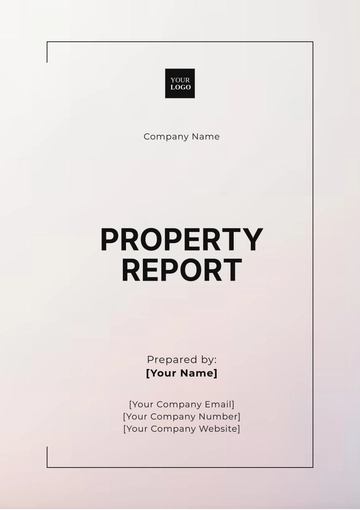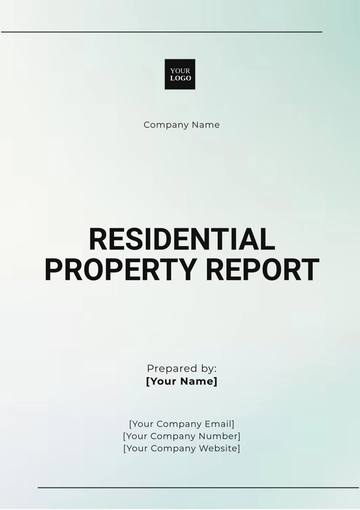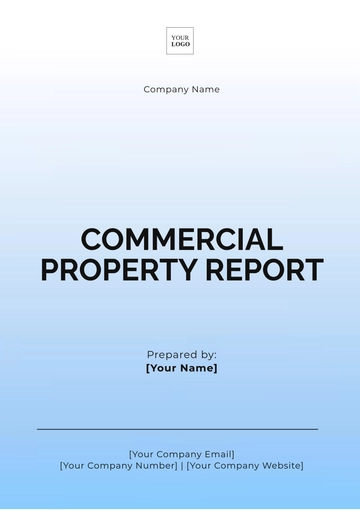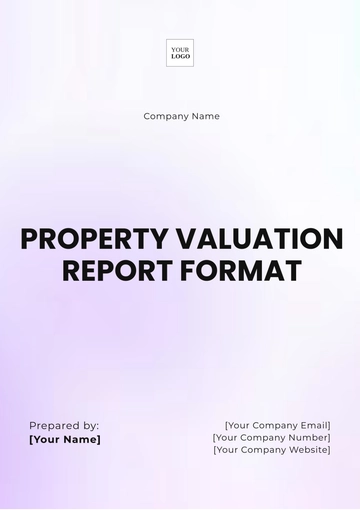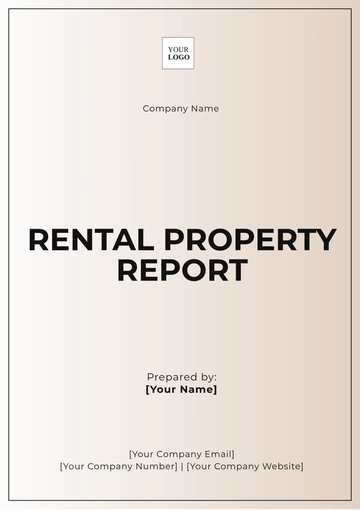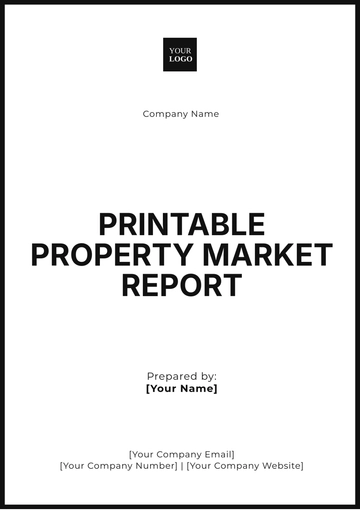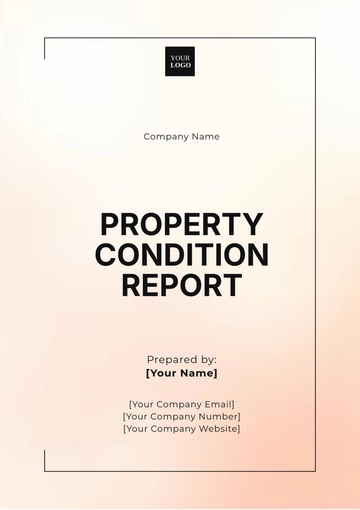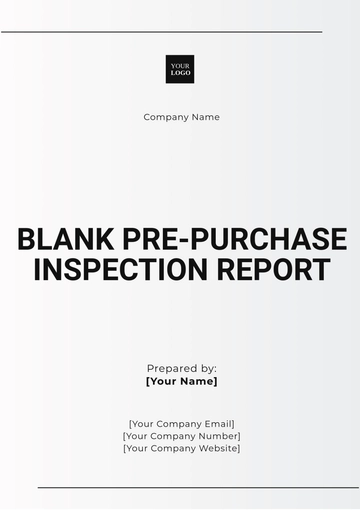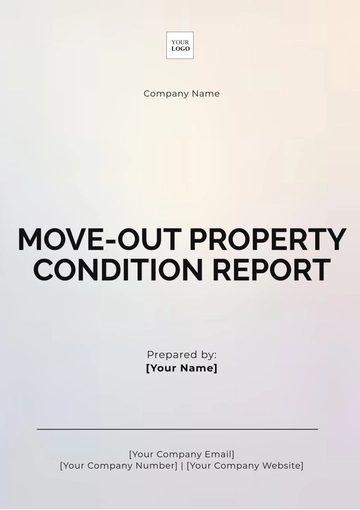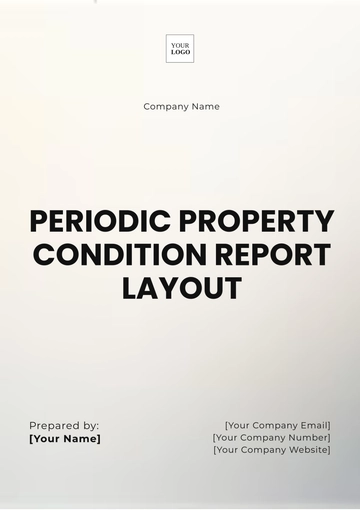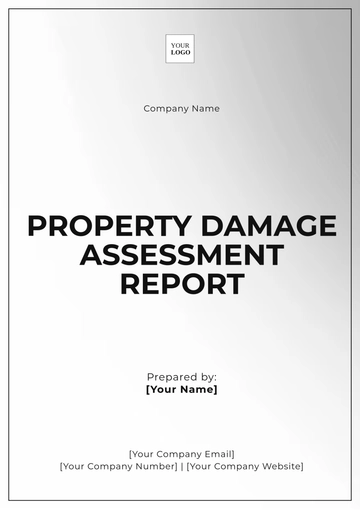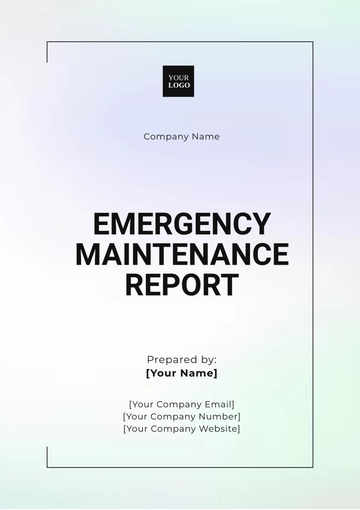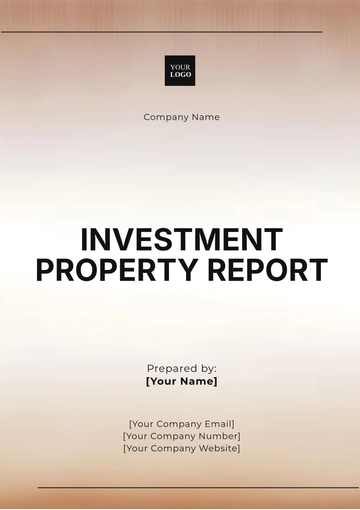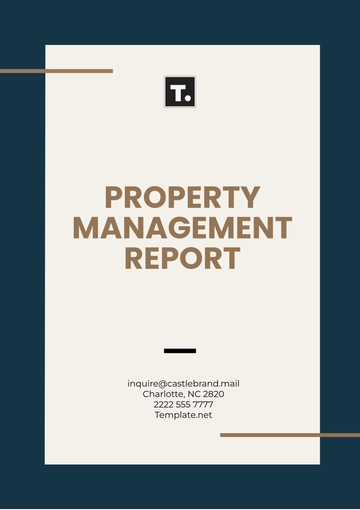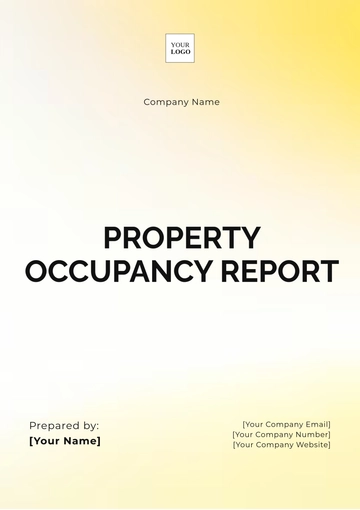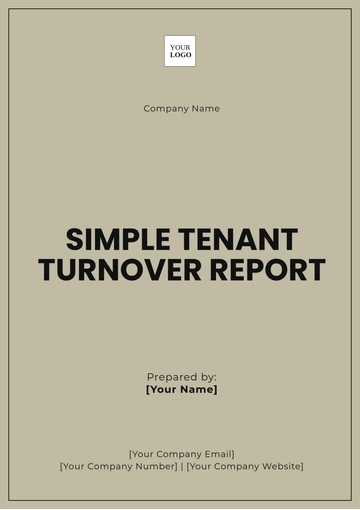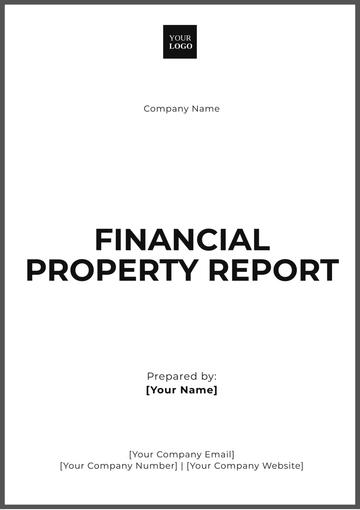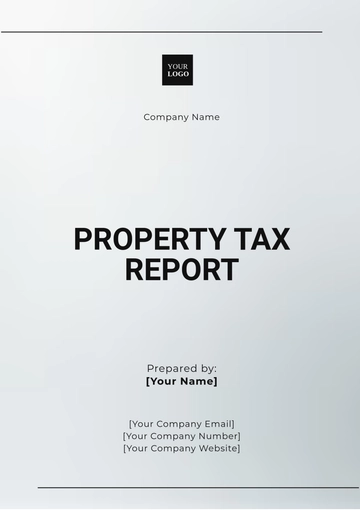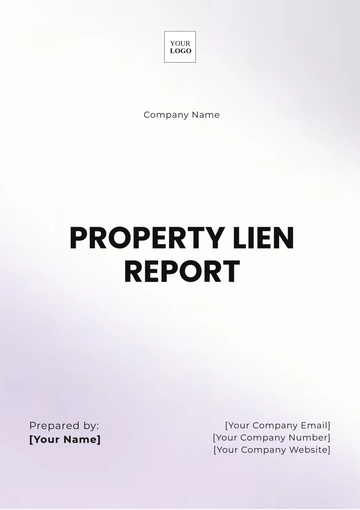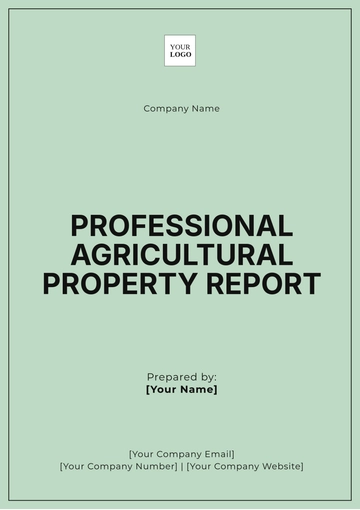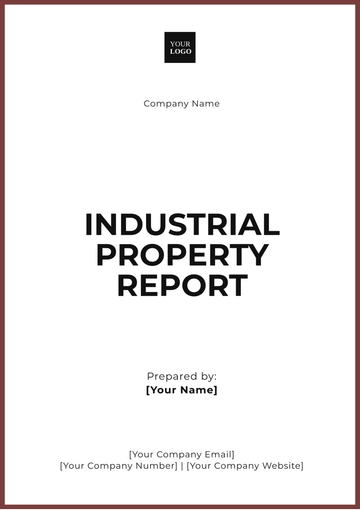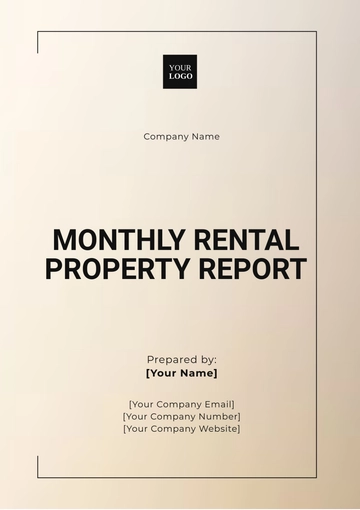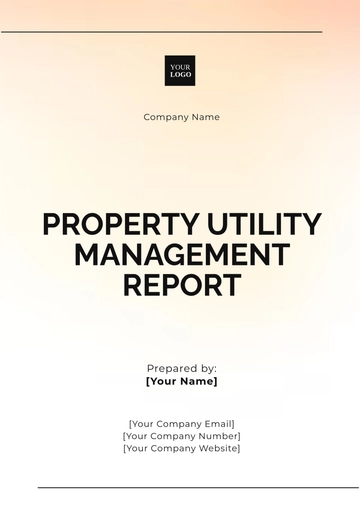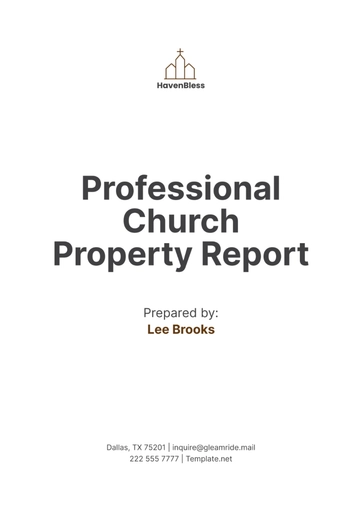Free Printable Property Market Report
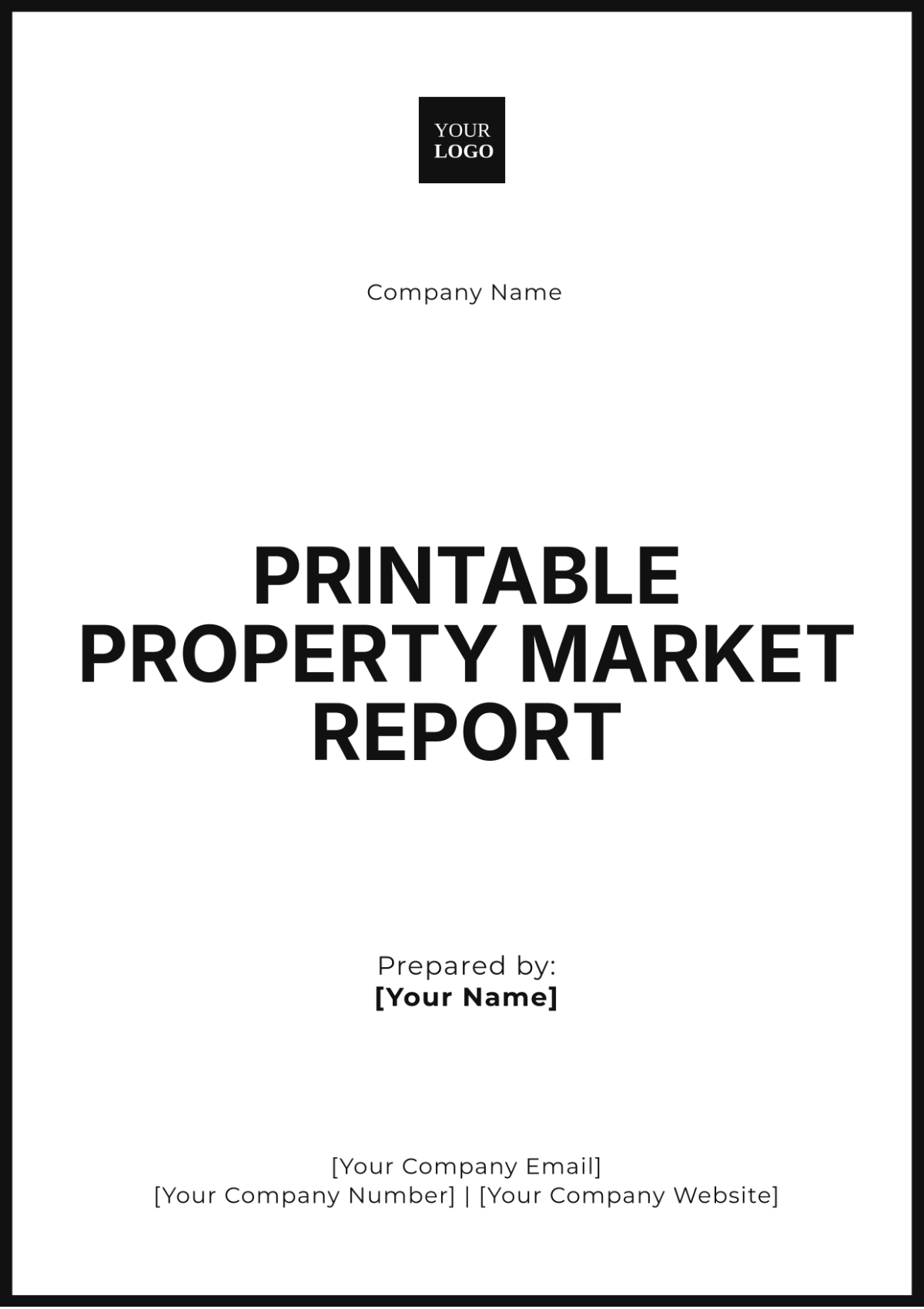
Prepared by: [Your Name]
Company: [Your Company Name]
Date: [Date]
I. Executive Summary
This 2055 Property Market Report delivers an in-depth analysis of current trends in the real estate sector, highlighting critical aspects such as property price movements, supply and demand forces, and future projections. The analysis is intended to aid real estate professionals, investors, and policymakers in making informed decisions.
Key findings in this report indicate a sustained, albeit gradual, increase in property prices driven by persistent demand outstripping constrained supply. Additionally, technological integration in real estate transactions and urban planning continues to reshape the property landscape. Notably, the impact of climate resilience measures is becoming more pronounced, influencing both property values and buyer preferences.
II. Market Overview
The real estate market in 2055 reflects ongoing resilience, with moderate growth in most sectors. Post-2050, there has been an observable trend towards "smart city" developments and eco-friendly urban planning. Suburban and rural areas, supported by advancements in remote working technologies and infrastructure, continue to see growth, while urban centers face varying degrees of transformation to accommodate a higher demand for sustainable living.
A. Economic Indicators
GDP Growth: National GDP has grown by 2.5% annually, bolstered by innovation-driven industries and tech-sector advancements.
Employment Rates: Employment remains high in tech and green sectors, increasing disposable income for property buyers.
Mortgage Rates: Historically low mortgage rates (averaging 1.8% since 2051) have continued to fuel real estate market activity.
B. Market Segmentation
Residential: Strong demand for green-certified homes, single-family dwellings, and smart homes that integrate sustainable technologies.
Commercial: Office spaces continue to adapt to hybrid work models, with demand for smaller, flexible co-working spaces on the rise.
Industrial: The industrial sector, particularly in logistics and automated warehousing, is expanding rapidly, driven by e-commerce and drone delivery systems.
III. Property Price Trends
Property prices have shown steady growth across the nation, with notable variation by region. The Average Property Price Index reflects upward movement, with both suburban and coastal regions seeing higher-than-average growth.
A. Overall Price Movement
Quarter | Average Price Change (%) |
|---|---|
Q1 2055 | +3.8% |
Q2 2055 | +4.5% |
Q3 2055 | +4.0% |
Q4 2055 | +3.3% |
B. Regional Variations
Urban Centers: Prices in major metropolitan areas, such as New York and Los Angeles, show moderate growth, with luxury properties exhibiting price stagnation.
Suburban Regions: Suburban areas, especially those in tech hubs such as Silicon Valley and Austin, continue to experience above-average growth rates, driven by a migration of tech professionals seeking larger living spaces.
Coastal Areas: Regions such as Miami and San Diego continue to command premium pricing, partly due to their climate-resilient developments and high desirability for waterfront living.
IV. Demand and Supply Analysis
The interplay between demand and supply continues to shape the market dynamics.
A. Demand Drivers
Low Interest Rates: Historically low mortgage rates encourage home purchases, making property investments more accessible.
Technological Advancements: Increased use of virtual reality (VR) property tours and blockchain technology in transactions has simplified the buying process, broadening market reach.
Sustainable Living Preferences: Buyers are increasingly prioritizing properties with eco-friendly features like solar energy, energy-efficient designs, and smart home automation.
B. Supply Constraints
Construction Material Shortages: Ongoing global material shortages (particularly for eco-friendly materials) are hindering new construction projects.
Land Scarcity in Urban Areas: In high-demand urban centers, a shortage of available land for development limits new housing supply, exacerbating price pressures.
V. Forecasts and Projections
The outlook for the property market beyond 2050 suggests continued growth, although at a potentially moderated pace due to economic cycles and regulatory changes.
A. Short-term Outlook (2055-2056)
Over the next 12 months, property values are expected to grow between 2.5% and 3.5%, with suburban and tech-centric areas seeing the highest increases.
B. Long-term Outlook (2060-2065)
In the longer term, cumulative growth over the next five years could approach 17%, largely dependent on the stability of global economic factors and domestic interest rate policies. Continued innovations in urban infrastructure and environmental regulations are likely to reshape both property development and investment opportunities.
VI. Key Market Drivers and Challenges
The market’s direction is influenced by several factors, from economic conditions to policy changes.
A. Market Drivers
Green Technologies: The rise of energy-efficient homes and eco-friendly building materials is attracting environmentally conscious buyers.
Digital Transformation: Virtual property transactions, smart contracts, and digital mortgages streamline the home-buying process, boosting market fluidity.
Climate Change Resilience: Coastal and flood-prone areas are seeing shifts in buyer interest due to stricter zoning regulations and climate-related risks.
B. Challenges
Rising Interest Rates: A potential upward adjustment of interest rates in response to inflationary pressures could curb buyer affordability.
Environmental Regulations: New regulations surrounding sustainable building practices could increase construction costs, affecting profit margins.
Global Economic Instability: Uncertainty in global markets and potential economic downturns could impact real estate investment sentiment.
VII. Regional/Local Market Analysis
An in-depth analysis of local markets indicates varying degrees of growth and opportunity.
A. Urban vs. Suburban Dynamics
Urban markets are witnessing a slow recovery in certain high-density areas, where vacancy rates have increased slightly. On the other hand, suburban markets are benefitting from a migration of professionals seeking more spacious, eco-friendly living environments, coupled with smart city innovations.
B. Emerging Markets
Regions such as Denver, Seattle, and Raleigh are identified as emerging markets, thanks to their focus on sustainable development and infrastructure investments. These areas are attracting both residential and commercial real estate investors.
VIII. Conclusion and Recommendations
The 2060 property market demonstrates positive growth trends fueled by sustained demand, technological advancements, and eco-friendly developments. Stakeholders are encouraged to focus on regions showing strong infrastructural development, particularly in suburban and emerging markets.
A. Recommendations
Invest in Technology-driven Markets: Regions investing in smart city technologies and digital infrastructure present strong growth opportunities.
Prioritize Sustainable Properties: Focus on acquiring or developing properties with energy-efficient, eco-friendly features, which are increasingly sought after by buyers.
Monitor Policy Changes: Stay informed about local and national policy shifts affecting real estate, particularly in areas related to zoning, environmental regulations, and interest rates.
- 100% Customizable, free editor
- Access 1 Million+ Templates, photo’s & graphics
- Download or share as a template
- Click and replace photos, graphics, text, backgrounds
- Resize, crop, AI write & more
- Access advanced editor
Stay ahead in the real estate market with Template.net’s Printable Property Market Report Template. This editable and customizable template helps you create in-depth market analysis reports quickly. Editable in our AI Editor Tool, it allows you to modify data and statistics to fit your market insights. Present your findings with a polished, professional layout in no time.
You may also like
- Sales Report
- Daily Report
- Project Report
- Business Report
- Weekly Report
- Incident Report
- Annual Report
- Report Layout
- Report Design
- Progress Report
- Marketing Report
- Company Report
- Monthly Report
- Audit Report
- Status Report
- School Report
- Reports Hr
- Management Report
- Project Status Report
- Handover Report
- Health And Safety Report
- Restaurant Report
- Construction Report
- Research Report
- Evaluation Report
- Investigation Report
- Employee Report
- Advertising Report
- Weekly Status Report
- Project Management Report
- Finance Report
- Service Report
- Technical Report
- Meeting Report
- Quarterly Report
- Inspection Report
- Medical Report
- Test Report
- Summary Report
- Inventory Report
- Valuation Report
- Operations Report
- Payroll Report
- Training Report
- Job Report
- Case Report
- Performance Report
- Board Report
- Internal Audit Report
- Student Report
- Monthly Management Report
- Small Business Report
- Accident Report
- Call Center Report
- Activity Report
- IT and Software Report
- Internship Report
- Visit Report
- Product Report
- Book Report
- Property Report
- Recruitment Report
- University Report
- Event Report
- SEO Report
- Conference Report
- Narrative Report
- Nursing Home Report
- Preschool Report
- Call Report
- Customer Report
- Employee Incident Report
- Accomplishment Report
- Social Media Report
- Work From Home Report
- Security Report
- Damage Report
- Quality Report
- Internal Report
- Nurse Report
- Real Estate Report
- Hotel Report
- Equipment Report
- Credit Report
- Field Report
- Non Profit Report
- Maintenance Report
- News Report
- Survey Report
- Executive Report
- Law Firm Report
- Advertising Agency Report
- Interior Design Report
- Travel Agency Report
- Stock Report
- Salon Report
- Bug Report
- Workplace Report
- Action Report
- Investor Report
- Cleaning Services Report
- Consulting Report
- Freelancer Report
- Site Visit Report
- Trip Report
- Classroom Observation Report
- Vehicle Report
- Final Report
- Software Report
